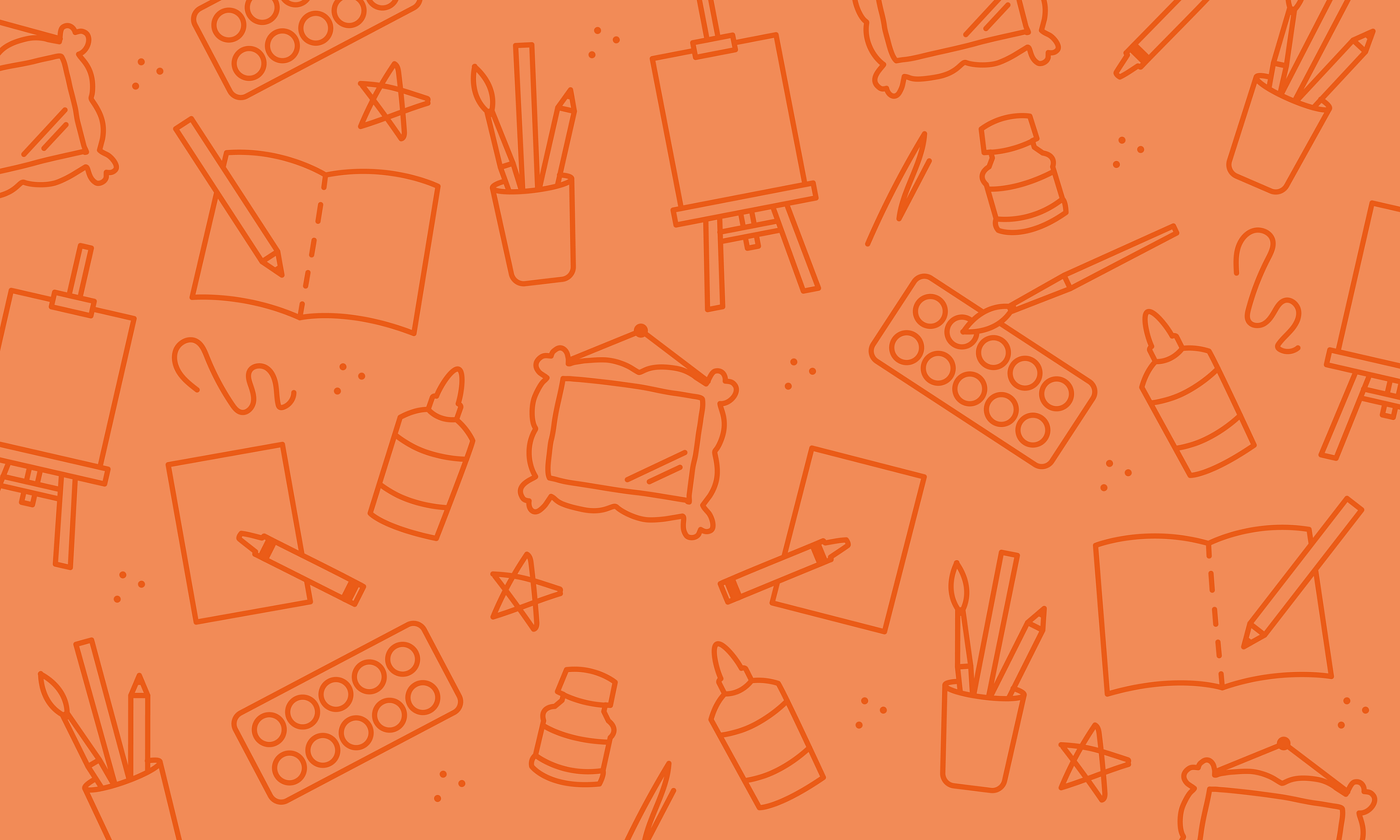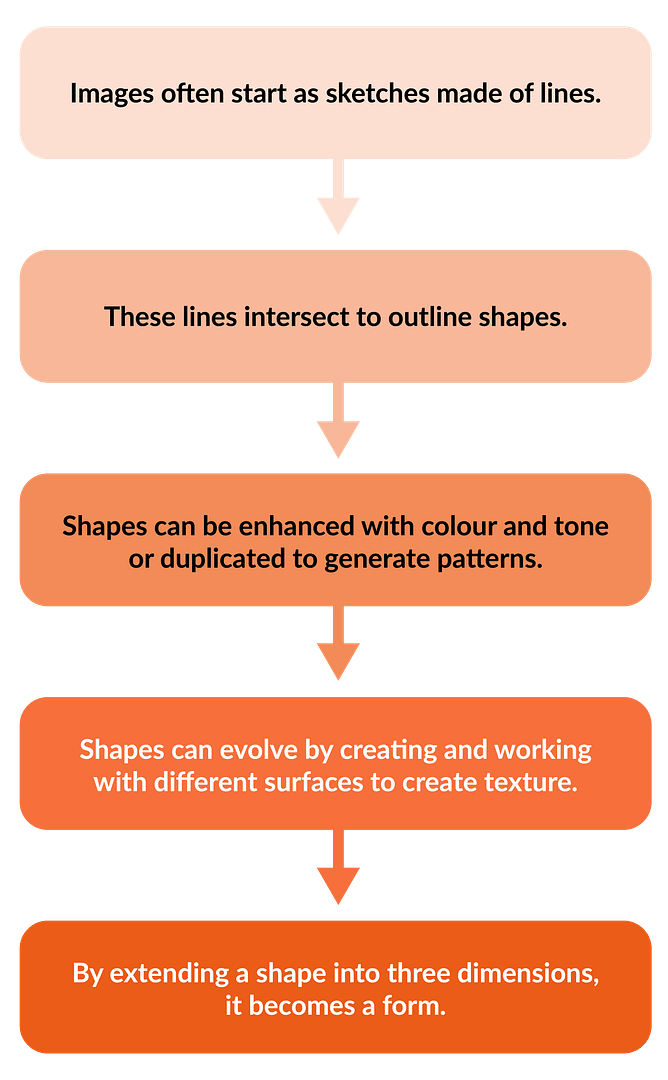Understanding The Formal Elements Of Art In Primary Education
Written by Kapow Primary
Published on 16th April 2024
Last Updated: 16th April 2024
Written by Kapow Primary
Published on 16th April 2024
Last Updated: 16th April 2024

Art educators are likely to come across the term ‘formal elements’ when planning and teaching art. However, non-specialists may not know what they are or what they mean. Plus, even with some art training, knowing how to apply formal elements to a primary curriculum can be challenging.
This blog aims to develop your understanding of the formal elements and explores how to integrate them within your teaching practice.
The formal elements of art are the building blocks artists use to create a piece of artwork. They comprise:
The national curriculum for primary Art and design doesn’t refer to ‘formal elements’ but instead uses the term ‘aspects’ within key stage 1. It’s easy to understand why those unfamiliar with this language can be left confused when they see ‘formal elements’ referred to in curriculums or schemes of work. However, it’s important to understand these elements to deliver a well-rounded art education, even if you’re not an art specialist.
The formal elements provide a vocabulary and framework for pupils to understand and discuss art. They help develop observational skills, critical thinking, and artistic vision. However, you do not need to teach these elements in isolation, as Art and design is an interwoven discipline. Recognising how the formal elements interconnect and interact with each other helps children appreciate art as a holistic experience rather than a sum of its parts.
Lines are the backbone of most artworks. They can vary in width, direction and length and create shapes, patterns and textures. They can also express movement or emotion.
Shapes are flat and can be geometric or organic. In art, shape is defined as the enclosed space bounded by lines. Geometric shapes have specific, regular forms (e.g. squares, circles or triangles). Organic or free-form shapes are natural and irregular (e.g. leaves, puddles or clouds).
Children should explore how shapes help create a sense of space, depth and interest within an artwork.
Colour refers to the spectrum of hues we can see with our eyes. All colours can be mixed from the primary colours of blue, red and yellow, creating a vast array of hues, shades and tints by combining these in different ways. Children’s colour choices can influence mood or convey messages and feelings within their artwork, for example, blue, green and purple create a sense of calm, relaxation or sadness.
Texture refers to how things feel (or how they look like they might feel) if touched. It’s seen in the surface quality of an artwork, which can be smooth, rough, soft, hard or any other tactile sensation. Texture can be actual, where the surface is physically varied. It can also be visual, which is implied using techniques to create the illusion of texture on a flat surface.
For primary school children, exploring texture involves touch and sight to help them appreciate the sensory experience of art. They learn to create different textures using different materials, methods and techniques, from creating actual textures using collages, or visual textures using paint, pencil or crayon.
Form refers to the three-dimensional quality or appearance of objects, giving them depth, height and width, unlike shape, which is two-dimensional and flat. Forms can be geometric (cubes, spheres or cylinders) or organic (the irregular forms found in nature, such as trees, animals or human figures).
Teaching form helps children develop their ability to observe, understand and depict the world around them. This concept is often introduced through sculpting, where children can create three-dimensional forms, or, alternatively, through techniques such as shading, perspective and overlapping to create the illusion of form on a two-dimensional surface.
Tone creates depth, contrast and the illusion of a three-dimensional form on a flat surface. By varying tones, artists can suggest light, texture and distance within a composition. Artists also use tone to create depth and realism or convey emotion. When we talk about tone in art, we’re looking at how artists use shades (darker areas) and tints (lighter areas) to show how light falls on different surfaces.
For children, learning about tone involves experimenting with adding light or dark to a drawing or painting to make it look more realistic or convey a certain mood. This might include using techniques such as cross-hatching or creating gradients from light to dark.
Space is the illusion of depth or the actual depth within an artwork. It’s how artists create a sense of three-dimensionality on a two-dimensional surface or how they arrange three-dimensional sculptures or installations. Space can be positive, the area occupied by objects or figures. Or it can be negative, meaning the empty space around and between those objects or figures.
Exploring space in art helps children create realistic or imaginative pieces by understanding and manipulating the different planes (foreground, middle ground and background) along with size, placement and overlap to convey depth and perspective.
Patterns are repeating designs, shapes, colours or lines that create a visually organised arrangement. Patterns can be regular (where the elements are repeated in a predictable manner) or irregular (where the repetition varies but still creates a cohesive look).
Teaching children about patterns involves recognising and creating sequences of elements in their art. This might be repeating shapes or colours in a row or more complex arrangements where variations in size, orientation or colour are introduced. Patterns can be used to fill spaces, create textures or add interest and rhythm to a piece of art.
It’s important to recognise how the formal elements are interconnected:

As the building blocks of art, formal elements naturally form part of every art lesson, whether children think about them in isolation or not.
The Kapow Primary Art and design scheme embeds the formal elements of art through all units and lessons, emphasising their intertwined nature and how they contribute to a holistic understanding and creation of art. This promotes creativity, critical thinking and a deep appreciation for the visual world.
As children progress through the curriculum, they are encouraged to draw upon line, shape, colour, texture, form, tone, space and pattern in various ways. This approach allows children to explore art and understand the importance of each element and its place in the creation of meaningful and expressive artwork. Children also develop a comprehensive art vocabulary and the ability to thoughtfully and critically analyse and appreciate art.
Here are some ideas for highlighting formal elements in your class:
Begin with a brief story or interesting fact about an artist whose work exemplifies one or more formal elements. For example, discuss Bridget Riley and her use of lines or how Leonardo Da Vinci uses tone in his artwork.
Encourage pupils to identify and talk about the elements they see. Ask questions such as ‘How do you think the artist felt when creating this?’ or ‘What element stands out the most, and why?’ Or encourage pupils to present and discuss the elements within their work.
After discussing an artist, children could create their own artwork inspired by that artist’s style. For instance, after studying Georges Seurat, pupils could try using pointillism to understand colour and pattern or create abstract artwork inspired by Georgia O’Keeffe.
Ask children to create a piece combining two or more formal elements creatively. For example, they might create a collage (texture) focusing on contrasting colours and patterns.
Arrange a texture hunt to photograph or make rubbings of different textures. This is a great way to discuss texture and can be used to create a collage. Or set up a ‘colour mixing lab’ where children can create new colours.
Encourage children to reflect on elements they’ve used or observed in art around them. Ask them to review the formal elements they encountered during that lesson and make notes. Or regularly annotate artworks or their own sketches.
To conclude, art education is enriched by understanding the formal elements – they help children discover and create meaningful art. As a teacher with a clear understanding of formal elements, you can support your class in exploring how these elements influence the production and analysis of artworks, helping inspire the next generation of artists, designers and critics.